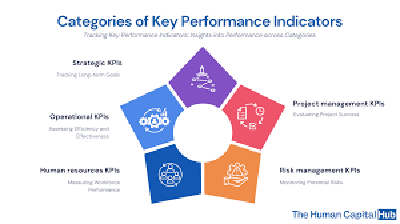Key performance indicators (KPIs) are quantifiable metrics used to measure the achievement of strategic objectives at the company level or within specific business units and functions. They translate high-level goals—derived from the overarching corporate vision (→ Vision)—into measurable targets, enabling organizations to track progress, identify trends, and guide decision-making.
Purpose and Application of KPIs
KPIs serve as a bridge between strategy and execution. They are developed by establishing cause-and-effect relationships between strategic objectives and operational activities. Once corresponding target values are defined, KPIs can be used for:
-
Monitoring goal attainment over time
-
Comparing performance across departments or business units
-
Guiding performance improvement and strategic alignment
Example
If the company’s vision includes “sustainable growth,” this may translate into an HR strategic objective such as “increase workforce by 1,000 employees in the current fiscal year.” A related KPI could then be defined as “Number of new hires (per fiscal year).” Monthly updates of this KPI would enable:
-
Tracking headcount growth
-
Identifying variances from the target
-
Performing detailed breakdowns by business unit or region
The KPI Paradox
Despite their effectiveness in focusing attention on key performance areas, KPIs also introduce a paradox:
KPIs reduce complexity to enable decision-making but risk overlooking important non-measurable aspects of performance.
For example, focusing solely on increasing headcount might achieve numeric hiring goals while compromising on quality of hires. If such KPIs are tied to performance appraisals or incentive plans, the risk of goal distortion increases—employees may optimize the metric at the expense of long-term outcomes.
Best Practices
To avoid KPI pitfalls, organizations should:
-
Complement KPIs with qualitative performance assessments
-
Regularly review and update KPI frameworks to reflect changing priorities
-
Ensure KPI systems are embedded within a broader performance management system that balances quantity with quality






![15 Employee Offboarding Templates That Save Hours of HR Time [Free Downloads] 15 Employee Offboarding Templates That Save Hours of HR Time [Free Downloads]](https://i1.wp.com/www.hrcloud.com/hubfs/Header.png?w=150&resize=150,100&ssl=1)
